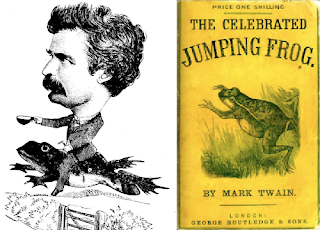 |
Cheese Rolling has become an annual event in Stilton and every May Day hundreds of villagers and visitors make their way to the main street to watch the teams battling for the honour of being called the "Stilton Cheese Rolling Champions".
Stilton History and The Cheese
 |
| The Bell Inn, where the rolling starts! |
Ancient Stilton
No one knows who lived here first - the earliest finds date from the time of the Roman occupation and are probably associated with the road that runs from London to the army fortress at Lincoln, which the Saxons later called Ermine Street.
For centuries this road seems to have been little used, the important route was the east-west road, Fen Street and Church Street, which is why our oldest building, the Church of St Mary Magdalene, is found away from the main road that now exists.
Stilton gets three mentions in the Doomesday Book of 1086 as three landowners, the King, the Bishop of Lincoln and Eustace held land here. The Great North Road had become a busy thoroughfare by the fifteenth century and Stilton was a well-known staging post; at one time there were 14 inns or ale houses for a permanent population of around 500 to 600 people. While most earned their living from farming, an analysis of the 1841 census, taken just before the long distance coach trade all but disappeared to be superseded by the railway, showed that occupations directly connected to the coaches were important too.
Village Pubs & The Cheese
All four of the present inns have very ancient origins, even though their buildings have been changed and modernised several times. We owe our famous cheese to the coach trade. Any Stiltonian can relate tales of visitors asking "where is the cheese made?...", only to be told "‘in Leicestershire, Nottinghamshire and Derbyshire".
The most widely accepted explanation is that the cheese came down to be sold at one of the coach stops in Stilton, perhaps The Bell or The Angel. As early as 1722 Daniel Defoe (the author of "Robinson Crusoe") ate some here and mentioned that the village was already famous for its cheese. The recipe was passed down through the Beaumont family of Quenby in Leicestershire. By 1830 a former housekeeper at Quenby, Elizabeth Orton, made cheese in her farmhouse. Her daughter married Cooper Thornhill who kept The Bell Inn and he sold the cheese. He was famous (or infamous) as a larger-than-life character who long held the record for riding to London and back.
Modern Stilton
Today, all Stilton cheese is factory made, but still only in the three counties with milk produced locally. It takes a gallon of milk to make one pound of cheese and a lot of skilled hard work is still needed. Each cheese matures for 3 months after which the blue veins appear naturally as oxygen is allowed to enter through holes pierced by stainless steel needles. A whole cheese weighs 15lb.
 |
| One of the officials watching a race |
Stilton’s dependence on the main road has been its undoing twice; in the middle of the nineteenth century when the railway line passed to the east through Holme and Yaxley, and in 1959 when the present A1 Stilton by-pass was opened. The village became a ghost village; The Bell actually closed and fell into disrepair and other businesses also disappeared. In 1962 Tom McDonald of The Talbot and Malcolm Moyer of The Bell, aided and abetted by telephone engineer Fred Linstead who provided a telegraph pole, cheered up their drinkers by organising the first ever Cheese Rolling along a course outside the present Post Office on Easter Monday.
A Little History On The Cheese Roll
How did it start?
It would be nice to be able to say that the event is "as old as the village" or that it's origins have been lost in "the mists of time" but really no one knows how far back the tradition of rolling the cheeses goes. Midway through the Twentieth Century, when the village had turned into rather a quiet place having been by-passed by the A1 and the inns and businesses had seen a big drop in their trade, a landlord of one of the pubs decided to revive an ancient tradition. Or so he told everyone! He could be seen rolling a Stilton Cheese along the road outside his pub. People came to stand and watch and eventually joined in. And so the sport began - again.
The Rules
It was originally run on Easter Monday and there was not a lot of uniformity to it to begin with. It seems a piece of wood in the shape of a Stilton Cheese was produced, a starting line drawn up somewhere between the The Stilton Cheese Inn and The Talbot and the finish line was outside The Bell Inn. Brave teams of Stilton men would then vie to roll the cheese to it's finish and, after the ensuing scramble, and many tussles and spills, the team that ended up steering the cheese to the finishing line would win! Nowadays, the starting point is always outside The Bell Inn and The Angel and the finish is a line drawn at the cross roads between the bottom of Fen Street and Church Street. The contestants are teams of 4, either all men or all women and each team member has to roll the cheese at least once during it's flight. It's a knockout competition with quarter's, semi's and a grand final.



















